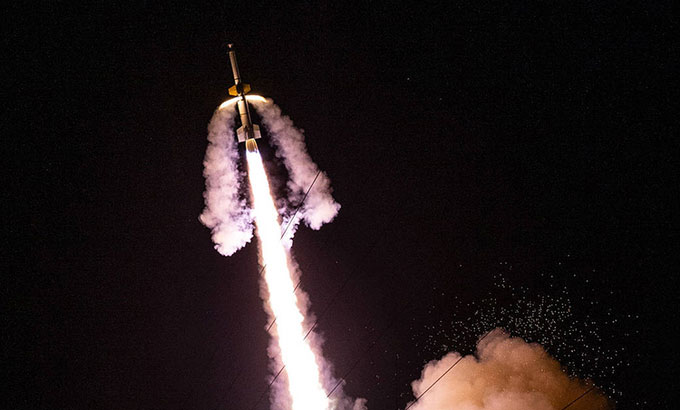A suborbital launch last weekend created beautiful purple and green clouds in the sky over Virginia, United States.
On the evening of May 16, the United States Space Agency (NASA) successfully deployed the KiNET-X mission with a Black Brant XII rocket from the Wallops Flight Facility in Virginia, eastern United States. The experiment aims to study the transfer of energy and kinetic energy in atmospheric circadian aurora-like phenomena between different magnetically connected regions of space.
New images posted by NASA on Twitter show the launch creating beautiful purple and green clouds in the night sky, with the purple darker than usual due to the black sky behind.
The KiNET-X mission includes an sub-orbital rocket carrying seven payloads. Two of them released clouds of barium vapor into the upper atmosphere, while the other five payloads were instruments for recording research results. The experiment took place approximately 10 minutes after launch at an altitude of 349 to 400 km above the Atlantic Ocean.
 “After exposure to the sun, the barium vapor quickly ionizes and turns purple,” NASA said in the mission description. “Spherical clouds are a mixture of green and purple, but this phase only lasts about 30 seconds before the un-ionized component dissipates.”
“After exposure to the sun, the barium vapor quickly ionizes and turns purple,” NASA said in the mission description. “Spherical clouds are a mixture of green and purple, but this phase only lasts about 30 seconds before the un-ionized component dissipates.”
The part of the cloud that is ionized (charged) is attached to the magnetic field lines in the area and extends in the tilted direction. Meanwhile, the green part (neutral region) is not affected by magnetic field lines, so it propagates faster and wider than the ionized region.
The implications of this experiment extend beyond Earth, as scientists are also interested in the interaction between Jupiter and its moon Io – the moon with the most active volcanoes in the solar system. The volcanic activity of Io and Jupiter’s magnetosphere together create a great aurora in the planet’s atmosphere.
“KiNET-X is like a mini-Io. The barium vapor clouds released by the rocket’s two payloads also generate magnetic field interference and potentially excited electrons. This experiment will help scientists better understand how the energy is transferred to electrons or negatively charged particles that the launch creates, ”said NASA.


